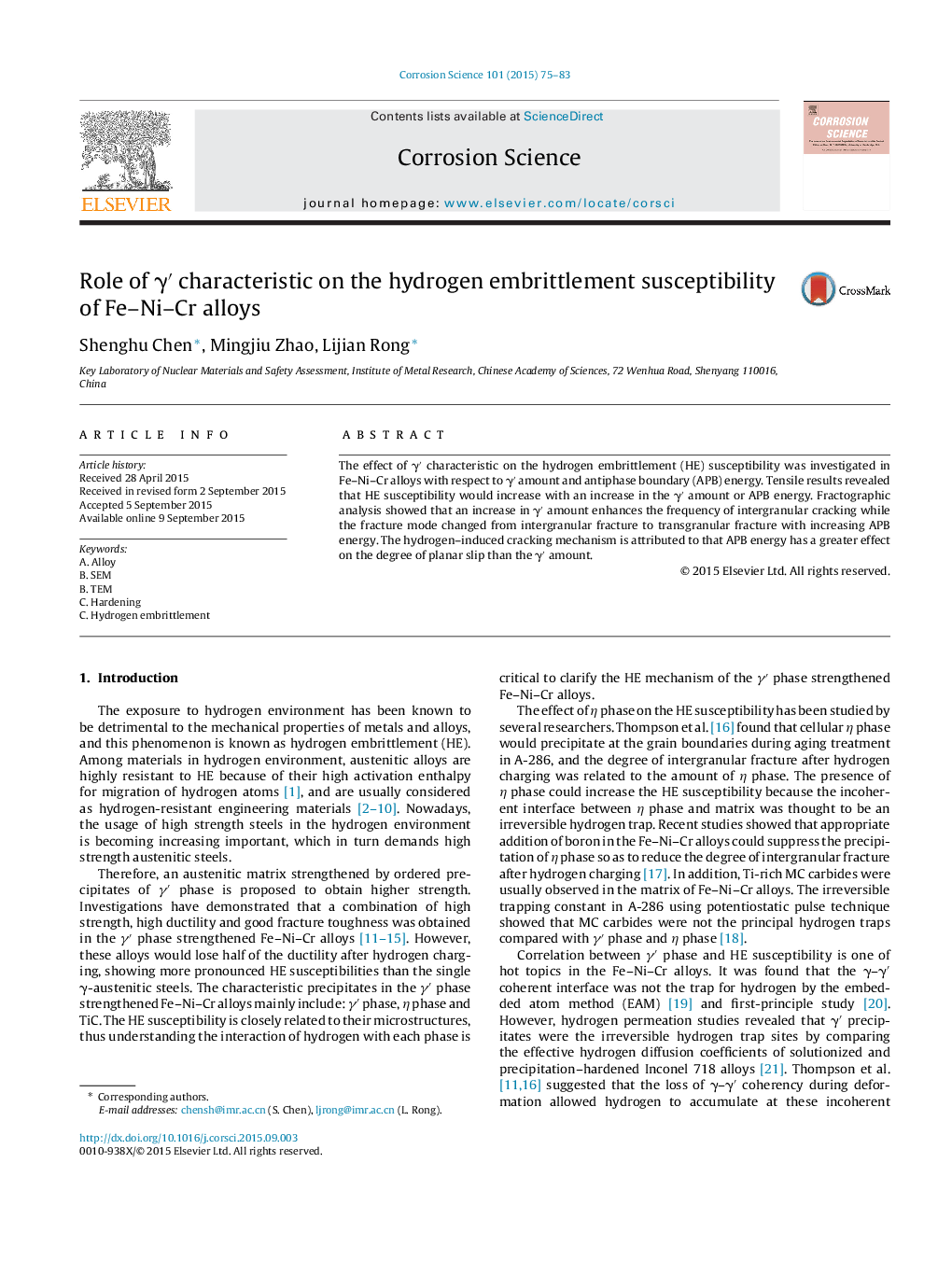| Article ID | Journal | Published Year | Pages | File Type |
|---|---|---|---|---|
| 1468475 | Corrosion Science | 2015 | 9 Pages |
•Effect of γ′ characteristic on hydrogen embrittlement susceptibility of Fe–Ni–Cr alloys is studied with respect to γ′ amount and antiphase boundary energy.•An increase in γ′ amount enhances the frequency of intergranular fracture while the fracture mode changes from intergranular fracture to transgranular fracture with increasing antiphase boundary energy.•Planar slip of dislocations is promoted with an increase in γ′ amount or antiphase boundary energy.•Antiphase boundary energy has a greater effect on the degree of planar slip than γ′ amount.
The effect of γ′ characteristic on the hydrogen embrittlement (HE) susceptibility was investigated in Fe–Ni–Cr alloys with respect to γ′ amount and antiphase boundary (APB) energy. Tensile results revealed that HE susceptibility would increase with an increase in the γ′ amount or APB energy. Fractographic analysis showed that an increase in γ′ amount enhances the frequency of intergranular cracking while the fracture mode changed from intergranular fracture to transgranular fracture with increasing APB energy. The hydrogen–induced cracking mechanism is attributed to that APB energy has a greater effect on the degree of planar slip than the γ′ amount.
